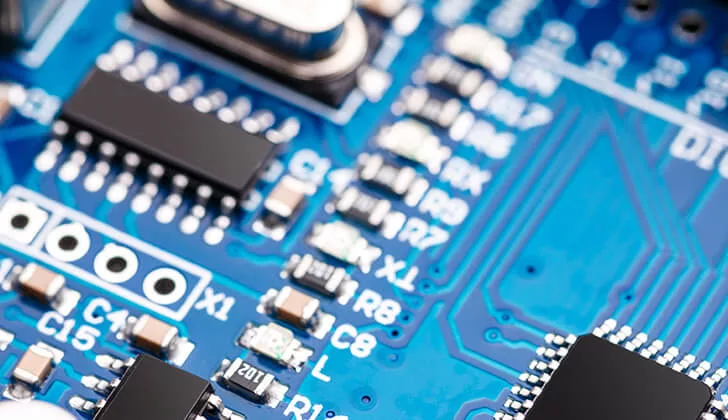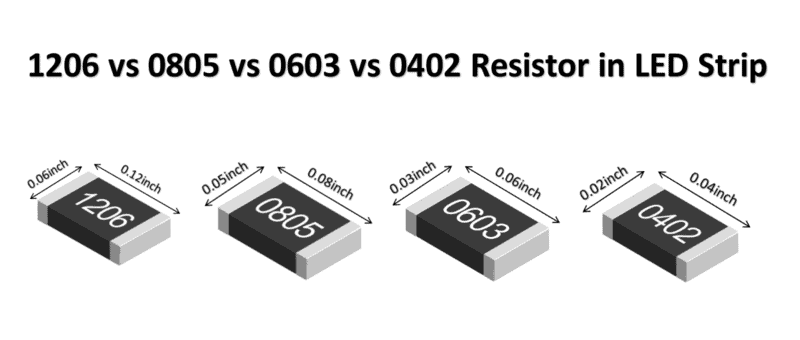If you're diving into the world of electronics, understanding SMD resistors is essential. These tiny components, known as Surface-Mount Device resistors, are critical in modern circuit design. But what are SMD resistor sizes, markings, and their practical uses? In short, SMD resistors come in various sizes like 0603 and 0805, have specific markings to indicate resistance values, and are used in compact, high-density circuits for everything from smartphones to automotive systems. In this blog, we'll break down SMD resistor sizes, markings, tolerances, wattage, and their real-world applications to help you choose the right component for your projects.
What Are SMD Resistors?
SMD resistors are small, rectangular components used in surface-mount technology (SMT) to resist the flow of electric current in a circuit. Unlike traditional through-hole resistors with wire leads, SMD resistors are soldered directly onto the surface of printed circuit boards (PCBs). This design makes them ideal for compact, automated assembly in modern electronics.
These resistors are widely used because they save space, reduce production costs, and support high-speed manufacturing. Whether you're designing a smartphone or a medical device, understanding SMD resistors is key to creating efficient and reliable circuits.

Understanding SMD Resistor Sizes
One of the first things to know about SMD resistors is their sizing. SMD resistor sizes are standardized and defined by a numerical code that represents their dimensions in inches or millimeters. The most common sizes, such as 0603 and 0805, are widely used in electronics. Let's break down what these numbers mean and why size matters.
Common SMD Resistor Sizes: 0603, 0805, and More
The size of an SMD resistor is indicated by a four-digit code. The first two digits represent the length, and the last two digits represent the width, measured in hundredths of an inch. Here are the most common sizes:
- 0603 Resistor: Measures 0.06 inches by 0.03 inches (1.6 mm x 0.8 mm). This is one of the smallest commonly used sizes, ideal for ultra-compact designs like wearables and mobile devices. It typically handles lower power, around 0.1W.
- 0805 Resistor: Measures 0.08 inches by 0.05 inches (2.0 mm x 1.25 mm). Slightly larger than 0603, this size offers a balance of compactness and ease of handling, often rated for 0.125W to 0.25W. It's common in consumer electronics.
- 0402: Measures 0.04 inches by 0.02 inches (1.0 mm x 0.5 mm). This tiny size is used in highly miniaturized devices but can be challenging to handle manually. Power rating is usually around 0.063W.
- 1206: Measures 0.12 inches by 0.06 inches (3.2 mm x 1.6 mm). This larger size can handle more power, often up to 0.25W or 0.5W, and is used in applications requiring higher dissipation.
Choosing the right SMD resistor size depends on your project's space constraints and power requirements. Smaller sizes like 0603 save space but may not handle high power, while larger sizes like 1206 are better for applications needing more wattage.

Why Size Matters in Design
The size of an SMD resistor impacts not only the physical layout of your PCB but also its performance. Smaller resistors allow for denser packing, which is critical in devices like smartphones where space is at a premium. However, smaller sizes can be harder to solder by hand and may have lower power ratings. Larger resistors, while easier to work with, take up more board space and may not fit in compact designs.
Decoding SMD Resistor Markings
Unlike through-hole resistors with color bands, SMD resistors use numerical or alphanumeric markings to indicate their resistance value. Understanding SMD resistor markings is crucial for selecting the right component and troubleshooting circuits.
Three-Digit and Four-Digit Codes
Most SMD resistors use a three-digit or four-digit code to represent their resistance value:
- Three-Digit Code: The first two digits are the significant figures, and the third digit is the multiplier (number of zeros to add). For example, a marking of "103" means 10 followed by three zeros, or 10,000 ohms (10 kΩ).
- Four-Digit Code: Similar to the three-digit code, but with an extra digit for precision. For instance, "1001" means 100 followed by one zero, or 1,000 ohms (1 kΩ).
These markings are printed on the top surface of the resistor and can be tiny, so a magnifying glass or datasheet may be needed to read them accurately.
EIA-96 Code for Precision Resistors
For precision SMD resistors, the EIA-96 code is used. This system combines two digits and a letter. The digits represent a base value from a standard table, and the letter indicates the multiplier. For example, "01B" might translate to 100 ohms. This system is less common but used for high-accuracy applications.

SMD Resistor Tolerance: How Accurate Are They?
SMD resistor tolerance refers to how close the actual resistance value is to the marked value. It's expressed as a percentage. For instance, a 10 kΩ resistor with a ±1% tolerance could have an actual resistance between 9.9 kΩ and 10.1 kΩ.
Common Tolerance Values
- ±1%: High precision, often used in sensitive circuits like medical devices or measurement equipment.
- ±5%: Standard tolerance for general-purpose applications where exact resistance isn’t critical.
- ±10%: Less common, used in low-cost or non-critical designs.
Tolerance is critical when designing circuits that require precise voltage or current control. Always check the tolerance rating in the component datasheet to ensure it meets your project’s needs.
SMD Resistor Wattage: Power Handling Capabilities
SMD resistor wattage indicates how much power the resistor can dissipate without overheating or failing. This is a crucial factor in circuit design, as exceeding the wattage rating can cause the resistor to burn out.
Typical Wattage Ratings by Size
- 0402: Around 0.063W, suitable for low-power applications.
- 0603 Resistor: Typically 0.1W, used in compact, low-to-medium power circuits.
- 0805 Resistor: Often rated for 0.125W to 0.25W, offering a good balance for many designs.
- 1206: Can handle 0.25W to 0.5W, ideal for higher power needs.
To calculate the required wattage, use the formula P = I2R (power equals current squared times resistance) or P = V2/R (power equals voltage squared divided by resistance). Always choose a resistor with a wattage rating higher than the calculated value to ensure safety and reliability.

Practical Applications of SMD Resistors
SMD resistors are used across a wide range of industries due to their small size, reliability, and compatibility with automated assembly. Here are some key areas where they play a vital role:
Consumer Electronics
In devices like smartphones, tablets, and laptops, SMD resistors (especially 0603 and 0805 sizes) are used to manage power distribution, protect circuits, and control signals. Their small footprint allows for the high-density layouts needed in these compact gadgets.
Automotive Systems
Modern vehicles rely on electronics for everything from engine control to infotainment systems. SMD resistors are used in sensors, control modules, and LED lighting circuits, where their durability and precision (often with ±1% tolerance) ensure consistent performance under harsh conditions.
Medical Devices
In medical equipment like heart monitors and diagnostic tools, SMD resistors provide the accuracy needed for reliable measurements. Small sizes like 0402 and 0603 are common in wearable health devices due to space constraints.
Industrial Automation
In robotics and factory automation, SMD resistors are used in control circuits and power management systems. Their ability to handle varying power levels (with appropriate wattage ratings) makes them versatile for industrial environments.
Tips for Working with SMD Resistors
Working with SMD resistors can be challenging, especially for beginners. Here are some practical tips to help you succeed:
- Use Proper Tools: Invest in a good soldering iron with a fine tip or a hot air rework station for precise soldering. Tweezers are essential for handling small sizes like 0603 and 0402.
- Check Markings Carefully: Always double-check SMD resistor markings with a magnifying glass or refer to the datasheet to avoid using the wrong value.
- Consider Tolerance and Wattage: Match the resistor’s tolerance and wattage to your circuit’s requirements to prevent failures.
- Practice on Scrap Boards: If you’re new to SMD soldering, practice on scrap PCBs to build confidence before working on your actual project.
Conclusion: Mastering SMD Resistors for Better Designs
SMD resistors are the backbone of modern electronics, offering a compact and efficient way to control current and voltage in circuits. By understanding SMD resistor sizes like 0603 and 0805, decoding their markings, and considering factors like tolerance and wattage, you can make informed choices for your projects. Whether you're designing consumer gadgets, automotive systems, or medical devices, these tiny components play a huge role in ensuring functionality and reliability.
With this guide, you now have a solid foundation to work with SMD resistors. Keep experimenting, refer to datasheets for specific components, and leverage the right tools to bring your electronic designs to life. At ALLPCB, we're committed to supporting your journey with high-quality PCB solutions tailored to your needs.
 ALLPCB
ALLPCB







